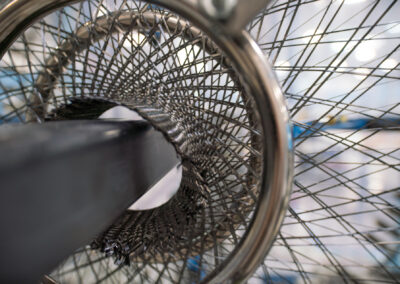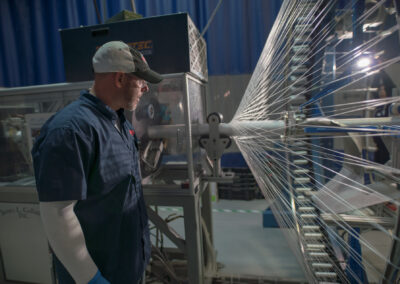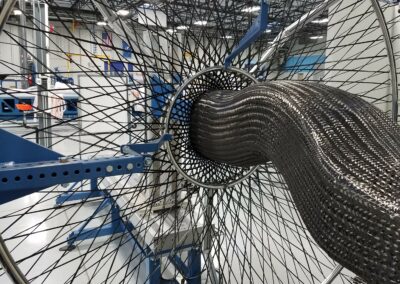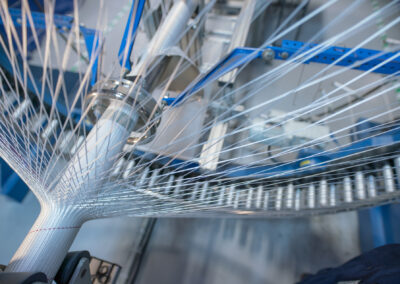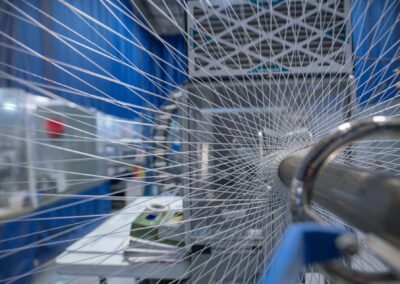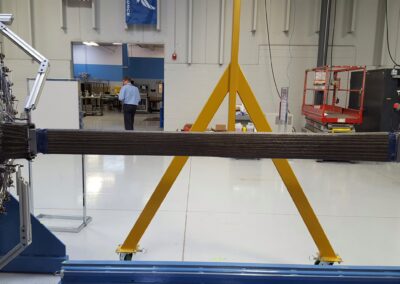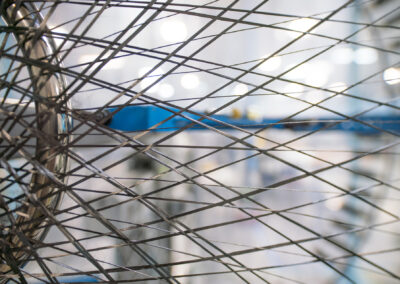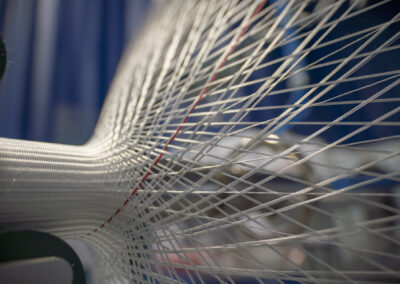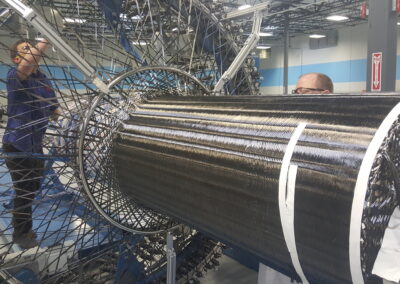Braiding
What is Braiding
Composite braiding is a unique technology used for producing components of moderate complexity.
Braided reinforcement may be in the form of an over-braid on a mandrel or formed as a continuous sleeve by a capstan. Braiding can be used in conjunction with fabric, foam, and other composite material to create dry preforms. These preforms typically are molded using a resin transfer molding (RTM) or vacuum assisted resin transfer molding (VARTM) process.
First, a mandrel is installed into the machine traverse. Packages consisting of dry carbon, fiberglass, aramid, or other reinforcement are loaded on the braiding machine carriers, and the tow is routed through to the braiding ring. Once the various fiber tows are secured to the mandrel, the packages are rotated around the circumference of the machine, weaving around each other. Half of the bias packages will rotate clockwise, with the other half moving counterclockwise. The axial packages remain stationary as to provide true zero-degree reinforcement to the structure. The machine traverse then migrates the mandrel through the braiding ring where the fiber is applied. This motion may be a single degree of freedom (straight line), or with multiple degrees of freedom to produce curved structures, such as air ducts for aircraft or missiles.
Key Benefits of Braiding
- Accommodating: Braiding may be used on components with higher levels of complexity than filament winding, such as changes in cross section size (ex: tapered diameter), cross section shape (ex: round to square), or part direction (ex: curved surface).
- Adaptability: The configuration of the machine may be easily altered to provide highly tailorable structural properties for the component being produced. As an example, the number of axial fiber packages may be increased to improve the axial stiffness and strength of the structure, or multiple fiber ends may be added to bias fiber packages to improve torsional or hoop properties.
- Efficiency: Once the machine is configured and setup, the braiding process is capable of applying a large amount of material in a relatively short amount of time compared to other processes. As the braiding machines are preprogrammed and automated, the amount of touch labor required is reduced.
- Performance: The continuous fibers applied to the product may provide improved strength and impact resistance.
Nammo Composite Solutions performs triaxial braiding where two bias angle fibers, such as ± 60 degrees, are intertwined with axial fibers (zero degrees), creating a single reinforcement ply. The bias angle produced is typically in the range of 45 to 80 degrees relative to the main direction of the part but is dependent upon factors such as: the machine size, geometry of the part, and the material used. Nammo Composite Solutions has six triaxial braiding machines of various sizes, the majority of which have 144 carriers.

